Related Research Articles
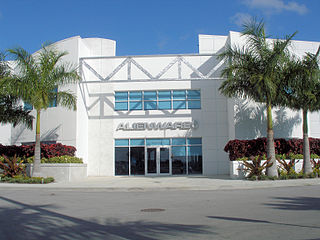
Alienware is an American computer hardware subsidiary of Dell. Their product range is dedicated to gaming computers which can be identified by their alien-themed designs. Alienware was founded in 1996 by Nelson Gonzalez and Alex Aguila. The development of the company is also associated with Frank Azor, Arthur Lewis, Joe Balerdi, and Michael S. Dell. The company's corporate headquarters is located in The Hammocks, Miami, Florida.

Dell Vostro is a line of business-oriented laptop and desktop computers manufactured by Dell aimed at small businesses. From 2013–2015, the line was temporarily discontinued on some Dell websites but continued to be offered in other markets, such as Malaysia and India.

HP TouchSmart is a series of tablet PC laptops and touchscreen all-in-one desktop computers designed by HP. It features various Intel or AMD processors and runs Windows Vista or Windows 7 as standard.

The ThinkPad W-series laptops from Lenovo are described by the manufacturer as being "mobile workstations", and suit that description by being physically on the larger side of the laptop spectrum, with screens ranging from 15" to 17" in size. Most W-series laptops offer high-end quad-core Intel processors with an integrated GPU as well as an Nvidia Quadro discrete GPU, utilizing Nvidia Optimus to switch between the two GPUs as required. Notable exceptions are the W500, which has ATI FireGL integrated workstation-class graphics, and the W550s, which is an Ultrabook-specification laptop with only a dual-core processor. The W-series laptops offer ISV certifications from various vendors such as Adobe Systems and Autodesk for CAD and 3D modeling software.

The IdeaPad S Series is a series of notebook computers launched by Lenovo in October 2008. The IdeaPad S10 was initially scheduled for launch in September, but its release was delayed in the United States until October.
The IdeaPad Z Series is designed primarily for entry-level multimedia users. The first three Z Series IdeaPad laptops were the Z360, Z460 and Z560, with 13 inch, 14 inch, and 15 inch screens respectively. All three laptops were released in 2010.
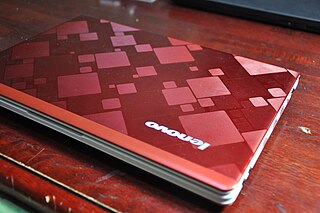
The first laptop in the IdeaPad U series was the U110 launched in 2008 by Lenovo. Showcased at CES 2008, the laptop also launched the IdeaPad series itself, and received the Best of CES 2008 award. The IdeaPad U series was a line of Lenovo's consumer line of laptops, combining Lenovo's traditional engineering with design changes that were significantly different from ThinkPad products.

The IdeaPad Y series is a consumer range of laptops produced by Lenovo, first announced in 2008. They are marketed as premium high performance laptops for multimedia and gaming, as part of the IdeaPad line. The most significant differences from Lenovo's traditional ThinkPad business laptops were a more consumer-oriented appearance and performance-oriented components. IdeaPads feature a chiclet keyboard with rounded keys, similar to the latest ThinkPads. The first of the Y series were the IdeaPad Y710 and the IdeaPad Y510 notebooks, with screen sizes of 17 inches and 15 inches respectively. Not all features were entirely new, however. Notebook Review reported that the Y710 and Y510 notebooks had a keyboard that felt similar to the ThinkPad when used, despite the absence of the TrackPoint. The Y50 and Y40, released in 2014, featured a gaming-oriented design shift and slimming down. The latest release was the Y700 in late 2015.
The A Series desktops are part of Lenovo’s ThinkCentre product line. Formerly an IBM brand, Lenovo acquired the ThinkCentre desktop brand following its purchase of IBM’s Personal Computing Division (PCD) in 2005. The first desktop in the A Series was the ThinkCentre A50p. Lenovo has released A Series desktops in multiple form factors, ranging from traditional tower, to small form factor, and all-in-ones (AIOs).
The M-series of desktops are part of Lenovo's ThinkCentre product line. Formerly an IBM brand, Lenovo acquired the ThinkCentre desktop brand following its purchase of IBM's Personal Computing Division (PCD) in 2005. Following its acquisition of IBM's PCD, Lenovo has released M-series desktops in multiple form factors, ranging from traditional tower, to small form factor, and all-in-ones (AIOs).
Lenovo’s IdeaCentre A Series is a line of all-in-one desktops designed primarily for home use and the consumer PC segment. The sections below describe the IdeaCentre A Series desktops, categorized by their year of release.
The IdeaCentre B Series all-in-one desktops from Lenovo were first launched in 2010. Like other desktops in the IdeaCentre product line, the B Series desktops were designed for home users, with a focus on the consumer PC segment. The first model in the series was the B500.
The Lenovo IdeaCentre Q series are a line of nettop computers meant primarily for home and personal use. The Q Series nettops are described by the manufacturer as being multimedia-oriented nettops. Comparing the size to a typical paperback book, Lenovo describes the Q Series nettops as the smallest desktops in production. The general features of the Q Series desktops are the small size, low energy requirements, ability to play HD video, and low noise levels.
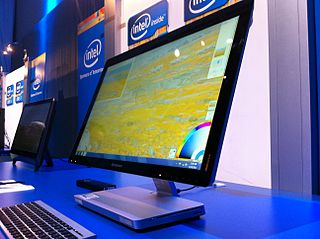
The IdeaCentre is a line of consumer-oriented desktop computers designed, developed and marketed by Lenovo. The first IdeaCentre desktop, the IdeaCentre K210, was announced by Lenovo on June 30, 2008. While the IdeaCentre line consists entirely of desktops, they share a common design language with the IdeaPad line of laptops and hybrids. One such feature is Veriface facial recognition technology.
In addition to the ThinkPad and IdeaPad laptops, Lenovo also offers a value-priced series of laptops. Called ‘Essential’ on the Lenovo web site, the products available in this line include the G Series, B Series, and V Series. Launched in 2009, the first laptop in the Essential range was the G530.
Lenovo’s line of Essential desktops is a collection of budget-conscious machines designed for consumers, and advertised as being "affordable, space saving, and energy efficient". The Essential desktop line is different from both Lenovo’s ThinkCentre line and Lenovo’s IdeaCentre line. Lenovo defines its ThinkCentre desktops as business-oriented computers, while the IdeaCentre desktops are meant primarily for entertainment. The Essential range of desktops can be categorized as being between the two – meant more for ordinary everyday use.
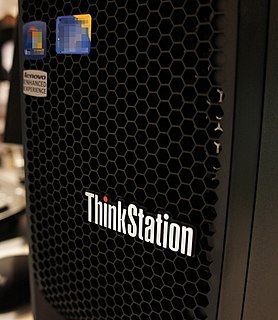
The ThinkStation products from Lenovo are professional workstations designed for high-end computing. In 2008, Lenovo expanded the focus of its "THINK" brand to include workstations, with the ThinkStation S10 being the first model released. In 2014, Lenovo introduced the P Series workstations.
The ThinkServer product line began with the TS100 from Lenovo. The server was developed under agreement with IBM, by which Lenovo would produce single-socket and dual-socket servers based on IBM's xSeries technology. An additional feature of the server design was a support package aimed at small businesses. The focus of this support package was to provide small businesses with software tools to ease the process of server management and reduce dependence on IT support. The tools developed for this support package included:
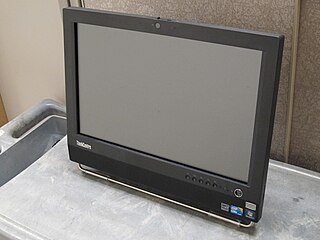
The ThinkCentre Edge is a series of desktop computer from Lenovo, designed primarily for home offices and small businesses. The product series features desktops in both tower and All-in-One form factors, designed to save up to 70% desk space as compared to traditional tower desktop PCs.

The HP Envy is a line of consumer-oriented high-end laptops, desktop computers and printers manufactured and sold by HP Inc. They started as a high-end version of the HP Pavilion line.
References
- 1 2 3 4 "IdeaCentre K Series" . Retrieved 24 February 2012.
- 1 2 3 4 5 6 Paul Miller (20 June 2008). "Lenovo kills off 3000 line, folds Y Series into IdeaPad family, K Series into IdeaCentre" . Retrieved 10 November 2011.
- 1 2 3 4 5 6 7 Dana Wollman (8 January 2012). "Lenovo outs IdeaCentre B340 and B540 all-in-ones, H520s and IdeaCentre K430 towers" . Retrieved 1 February 2012.
- ↑ Rich Brown Follow (5 January 2010). "Lenovo announces two more IdeaCentre desktops" . Retrieved 10 November 2011.
- 1 2 3 4 5 "Lenovo IdeaCentre K320" . Retrieved 10 November 2011.
- 1 2 3 4 5 Joel Santo Domingo (12 April 2011). "Lenovo IdeaCentre K330-11691AU". PC Magazine. Retrieved 10 November 2011.
- 1 2 3 4 Joel Santo Domingo (16 April 2009). "Lenovo IdeaCentre K220". PC Magazine. Retrieved 10 November 2011.
- ↑ "Lenovo IdeaCentre K220, K230 and H200 Desktop PCs" . Retrieved 10 November 2011.
- ↑ "Lenovo IdeaCentre K230 53592HU PC Desktop" . Retrieved 10 November 2011.
- 1 2 3 4 Darran Murph (30 June 2008). "Lenovo gets official with IdeaCentre K210 desktop" . Retrieved 10 November 2011.
- 1 2 Peter Ha (30 June 2008). "Lenovo announces its first desktop, IdeaCentre K210" . Retrieved 10 November 2011.
- 1 2 Brian Neal (21 August 2008). "Lenovo IdeaCentre K210". PC Magazine. Retrieved 10 November 2011.